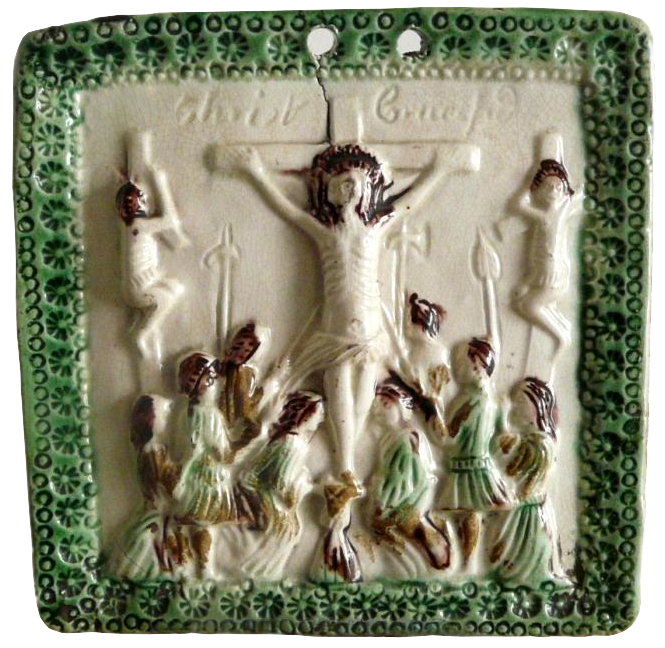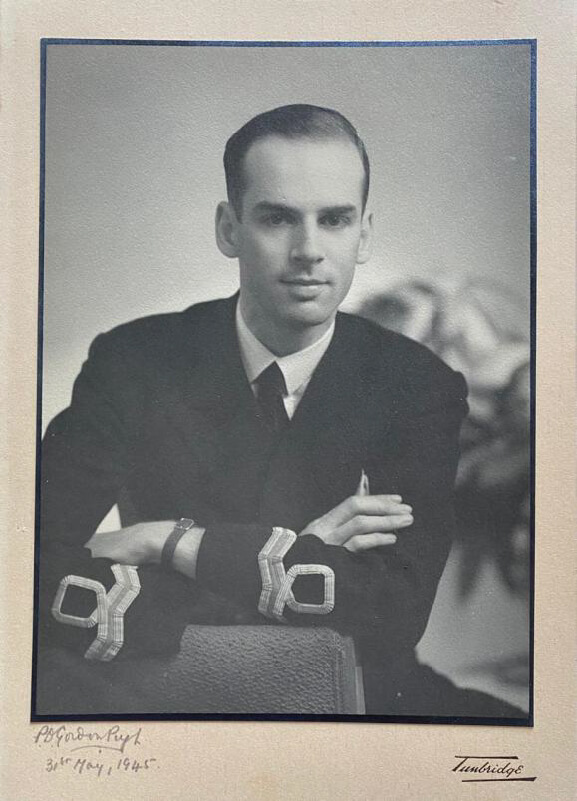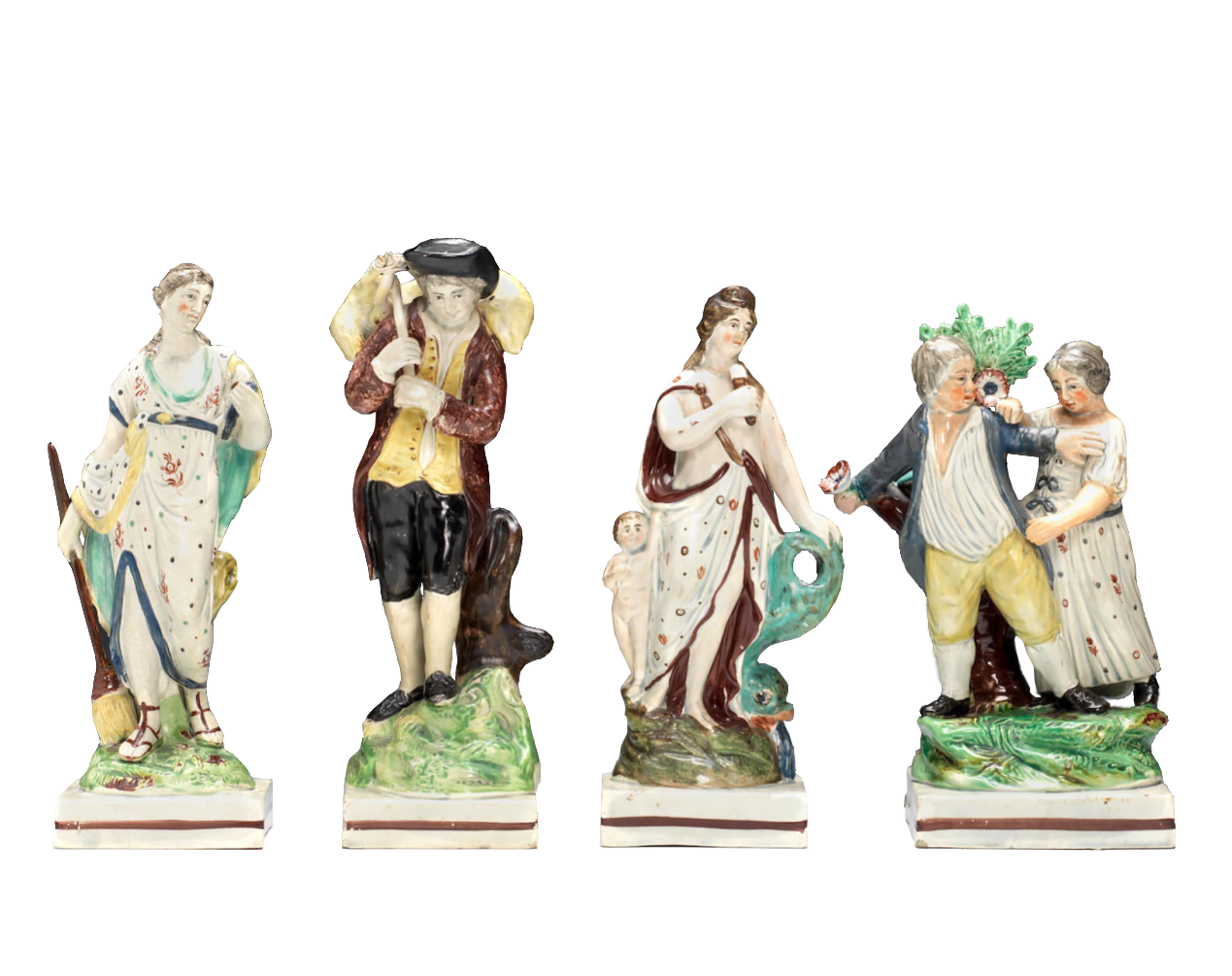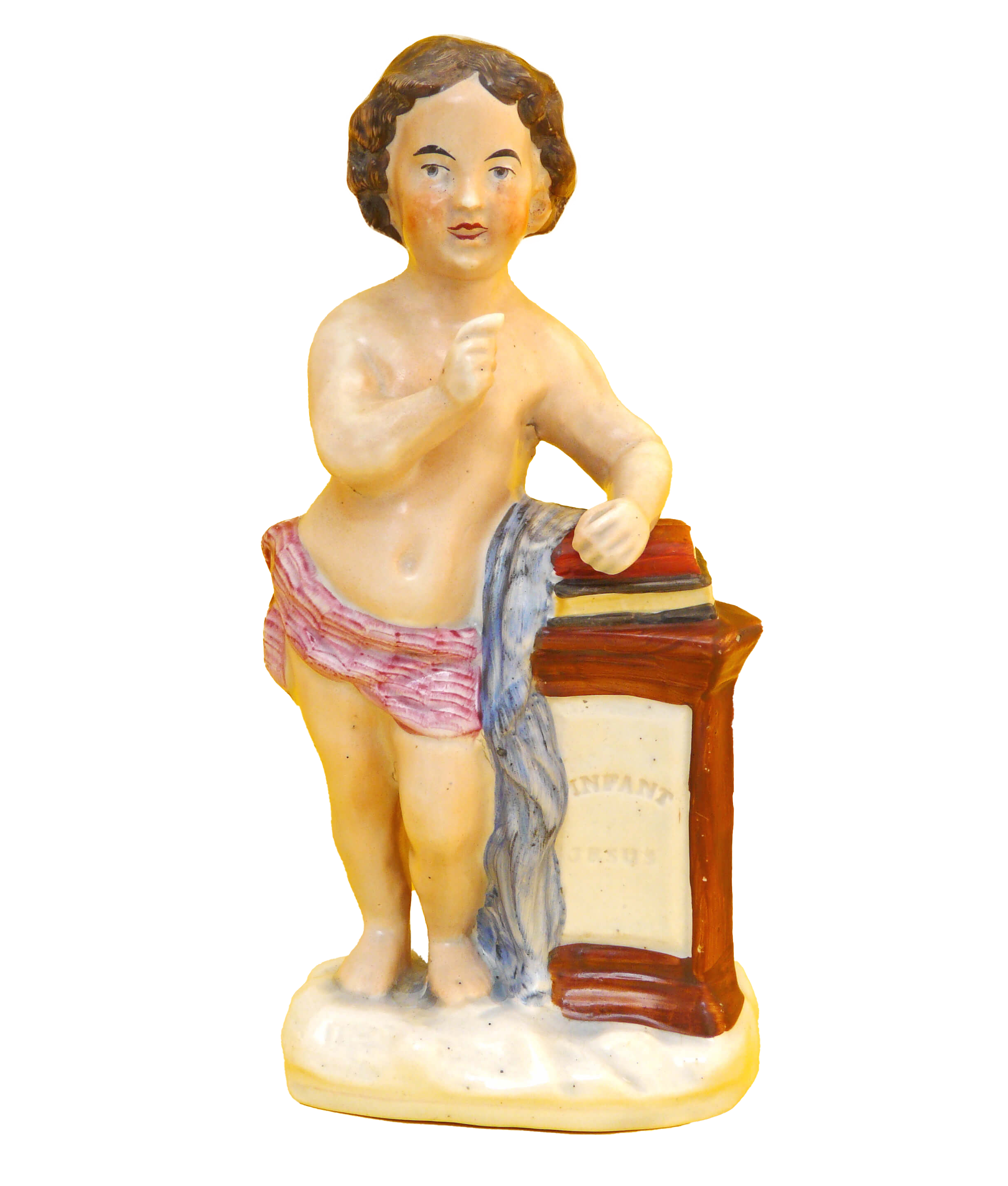My book on religious Staffordshire figures illustrates ten Victorian figures of the Crucifixion of Jesus Christ, and possibly one of his Resurrection – the two key events in Christian history. That’s only 11 out of some 220 religious figures I have identified. I have to confess these are amongst the Victorian figures I like least, not because of their theology but because generally they are late Victorian and do not illustrate the potter’s art at its best.
So I thought I’d branch out to show a small subsection of my collection which is pre-Victorian. This has the enormous advantage that the three ‘figures’ I show are all really good examples of the potter’s art at different periods. I hope they won’t be considered a cheat as they are actually plaques and only one of them has a free-standing figure, but the others have their figures in quite high relief.
The first is from about 1760 and is made in Staffordshire (almost certainly) in creamware with Christ Crucified written in relief at the top. It is a very rare piece though the Potteries Museum in Stoke had a similar one on display last time I was there. It shows Christ on the cross with a thief crucified on either side and a large collection of people down below. I think maybe five of these are kneeling, and two will be Mary, the mother of Jesus, and Mary Magdalene. There is very good decoration in oxide colours and lead glaze – notice the decorative edging, made with little daisy shaped impressions and tiny circles.
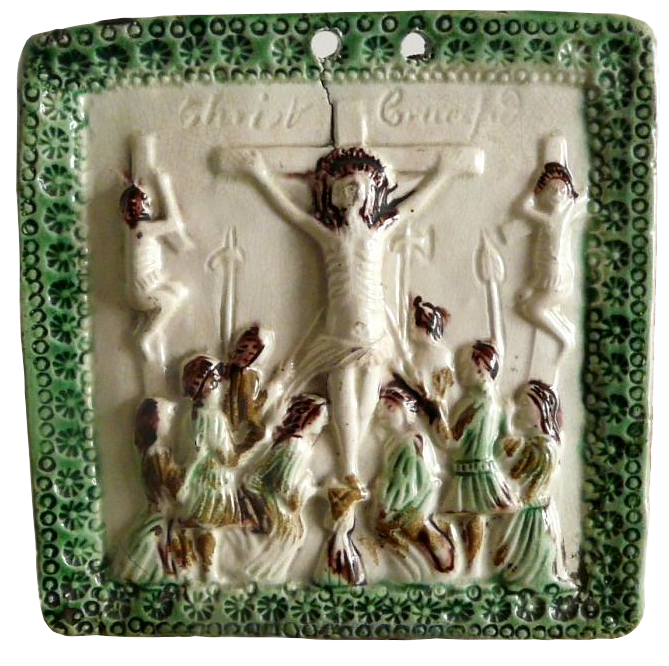
We then jump about sixty years to two pieces from about 1820, but still very pre-Victorian. The first may have been hand-carved out from a slab of clay for the cross itself and the intricate foliage around it. Like the plaque above, it is also a creamware piece. Then a small figure of Christ, with a bleeding side, has been mounted on, probably after the enamel colouring had been applied. Finally a holy water stoup has been added below and three cherubs embellish the piece.
The water stoup tells us that this was almost certainly for a Roman Catholic family for its domestic use and all the three pieces were likely to have been for Catholics, as Protestants normally have images of bare crosses rather than crucifixes. My book shows many Victorian figures with stoups and gives more description of their use. INRI at the head of the cross here represents the Latin inscription Iēsus Nazarēnus, Rēx Iūdaeōrum, or Jesus the Nazarene, King of the Jews.
“Cut out” plaque, c.1820


The final pre-Victorian figure of the same period as the last is different again. It is ‘prattware’, a type of creamware or pearlware made from the late 18th century to about 1840, with relief decoration, and with painting under the main glaze, both in this case. A slab of clay would have been used for the very solid base, and the relief image of Christ and a rather outsized cherub and other relief decoration would have been moulded and stuck on. Here Christ’s hands are bleeding from the nails that pierced them, but the blood is gold coloured to match some of the other decoration.
Prattware, c.1820
For anyone interested in seeing more of these rare Crucifixion figures, Myrna Schkolne in her series of books on 1780-1840 Staffordshire Figures shows three further ones (as well as one of mine above) in her Volume 2, p166.
By way of contrast, and to touch on the Resurrection as well as the Crucifixion, I show below two Victorian pieces which are in my book. The first is the simplest and probably most delicate of the Victorian crucifixes I have found. I have dated it probably to the 1870s.

My final image shows a standing Christ figure (again over a stoup) seemingly on tiptoes. Potters had an obvious difficulty in attempting to portray the Resurrection which painters have more liberty to imagine. Perhaps the potential ‘lift off’ pointed to here was the nearest they could do, if they were to depict it at all. This is a very rare 1870s figure. I have only seen this one – from the collection of Elinor Penna in New York.

Stephen Duckworth has been collecting Victorian Staffordshire pottery religious figures for 40 years and lives in west London. He gives papers on religious figures and is a regular speaker for many organisations. Stephen Duckworth started his collection with figures of John Wesley and has been a trustee of the heritage site of John Wesley’s Chapel, the New Room in Bristol – the oldest Methodist chapel in the world.
Stephen Duckworth’s book, Victorian Staffordshire Pottery Religious Figures – Stories on the Mantelpiece (Woodbridge, Suffolk: ACC Art Books, 2017), is available to buy from Postscript Books in the UK or Biblio in the US.


